How to Leverage Data for Agile Product Development
Product development is the process of taking an idea from conception through delivery and beyond. Whether you are launching a whole new product or improving an old one, the product development cycle begins long before anything is developed. Everything from ideation to carefully planning, building, and putting it to market — and then analyzing its performance — is covered in the product development lifecycle.
Product development has four types, agile, waterfall, kanban and scrum.
The Waterfall Model is sequential, thus the project development team only moves on to the next stage of development or testing when the previous stage has been successfully completed.
Agile is an iterative methodology with a cyclic and collaborative process. The agile framework has the advantage of allowing an organization to reduce the cycle from brainstorming to product launch much more quickly and with fewer modifications and enhancements in each release.
Now, waterfall is a sequential methodology that can also be collaborative; however, activities are often handled in a more linear manner.
To keep up with changing markets, businesses must constantly alter their strategy and products. Following an agile product development strategy can help teams respond to change more efficiently and build user-centric solutions that better meet the needs of customers. The best methodology for your projects will be determined by your preferences and the nature of each project. Some projects require a more iterative procedure, while others require a more sequential one.
In this article, I will define the Agile Methodology and explain how it applies to product development.
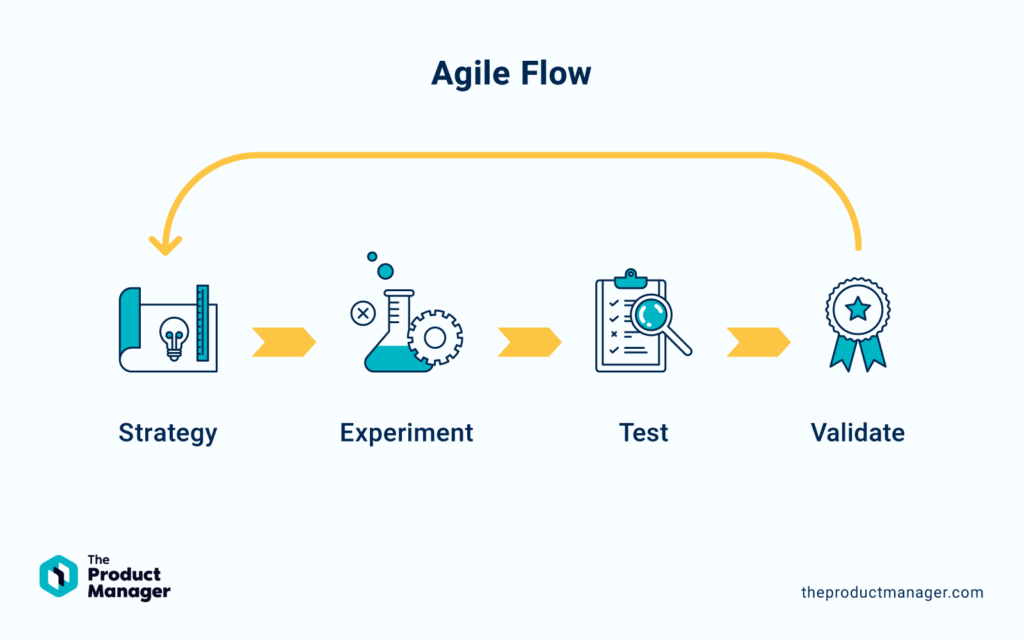
What is the agile product development methodology?
Due to its adaptability, agile project management is currently among the most widely used methods.The Agile Manifesto, a document authored by seventeen software development leaders, was published in 2001 and played a major role in popularizing agile.
One of the key distinguishing features of agile product development is rapid iteration based on user feedback.

An agile framework can reduce the time it takes from brainstorming and designing to product launch by allowing a product team to release versions of the product considerably faster with fewer upgrades and improvements. This is accomplished by more effectively involving actual users throughout the process.
In agile, teams work on project phases concurrently, often with short-term deadlines. This can motivate and increase the productivity of the team, but it also necessitates a more self-directed staff.
What are the benefits of agile product development?
The Agile mindset has various advantages over traditional new product development approaches:
- Enabling businesses to respond quickly to change
A dedicated product owner – and a process for recording and prioritizing product requirements – are required for rapid reaction times. With a product owner and a proper process in place, teams can reap significant benefits from agile development. - High flexibility
Continuous delivery and iterative development enable product teams to change or shift priorities as the project progresses. Agile teams can quickly adjust to changes and tailor their products to the needs of their consumers.
- Faster time-to-market
Agile teams are all about more frequent releases. Companies get a competitive edge by reducing time to market because they may collect feedback after each iteration and respond to market developments more quickly. - Reduced risk
Since testing is an integral part of agile product development, Because testing is performed at the conclusion of each sprint, product teams may discover and resolve problems before they become serious concerns. The quick feedback loops assist them in validating assumptions and understanding what truly delivers value to the consumer. - Customer satisfaction
The consumer is constantly a part of the decision-making process in Agile, so customer retention is higher. Flexibility and adaptability are hampered in the traditional framework because the customer is only involved in the planning stage and has no say in how things are done thereafter. You give value to the customer and guarantee that the final product is actually in line with their expectations by keeping them informed and making modifications in response to their input.
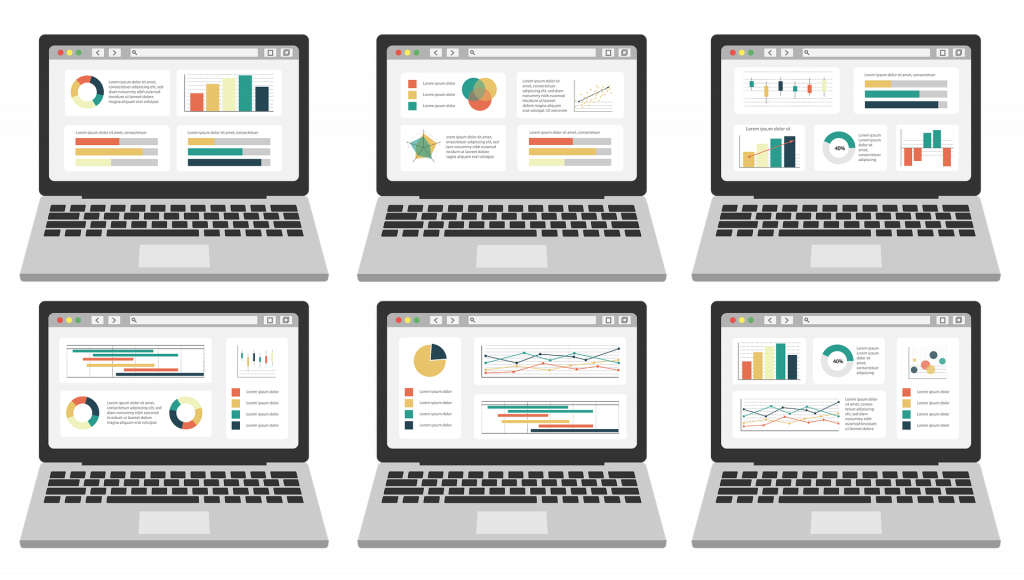
Features of the agile product development methodology
Agile is “iterative,” it incorporates consistent work rhythms
Iteration is a prominent feature of agile. It is incremental because the intention is to expand on the outcomes of one iteration in subsequent iterations.
Agile is intended to decrease development costs and time to market
Agile projects are less expensive since they allow for the pruning away of low priority tasks that may not be too lucrative. Knowing the right time to start and stop working on a task suggests a high level of agile maturity since success isn’t being equated to “creating what you said you’d build.” Instead, the benchmark is “creating what we need.”
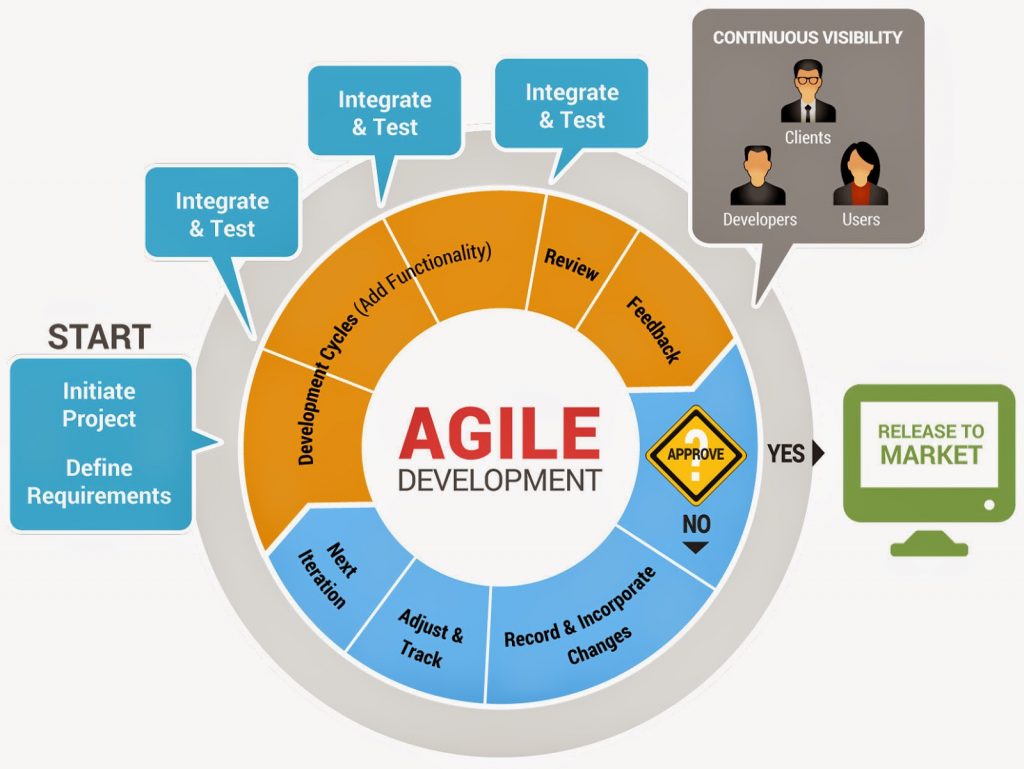
Agile is linked to reactivity in product development teams
The agile approach in and of itself emphasizes the value of being self-motivated, self-directed, and self-organized, and because trust is placed in both individuals and teams. Agile teams are characterized by the presence of trustworthy, motivated members who all aim to work together, take the initiative, accept responsibility for their portion of the project, and do not require someone to constantly tell them what needs to be done.
Agile is collaborative
Agile project management emphasizes teamwork. It entails collaborating with team members, stakeholders, and clients to keep projects on schedule. Engaging users early on in the process makes it easier to respond to their input. Cross-functional team members collaborate and share ideas to improve as a whole during the development process. They invite everyone to contribute their suggestions for how to make the project better. In doing so, teams can learn how to use each other’s skill sets and impart knowledge to one another through cooperating.
The role of data in agile product development
In agile product development, the product is tested incrementally, so you must keep track of everything, including feature adoption and customer satisfaction levels. In order to prevent losing clients to your rivals, you must also make sure that your user experience is on par with theirs.
Agile metrics are benchmarks that help software teams track their progress throughout the software development life cycle (SDLC).
With these metrics, it is easier to identify areas of improvement because the data and its usage are quantifiable. For instance, velocity metrics can be used to monitor the productivity of your team.

Another important thing for agile product development is analyzing the customer journey to minimize friction. The sum of all the interactions that customers have with your business and brand is known as the customer journey. It includes all of your teams, including CX, operations, sales, and marketing.
Every business wants every consumer to have the best experience possible. It is what results in content clients who love doing business with you and will recommend you to others.
But that’s not always the case. Instead, you create friction that causes problems for your clients.
By analyzing the customer journey you can see which points of friction you can minimize for a better user experience.
With tools like HockeyStack you can help your business with agile product management. Here are some ways HockeyStack can help you with the agile product management framework:
- Prioritize features based on user feedback
Qualitative data collection, which reveals precisely what your consumers are thinking and the language they use to express their feelings, is a useful method of gathering client feedback on your products.
You can gather information using qualitative methods, such as HockeyStack’s surveys, to help you prioritize particular features and set deadlines for their phased delivery. Customers’ favorite product features, areas for improvement, and current issues can all be directly learned from surveys, which can help inform subsequent product iterations.

Create product dashboards for a more detailed view of product management
You can use HockeyStack to build intricate product dashboards that will provide you with a more thorough perspective of your product management and a better action plan for the future. You can manage all your data from a single platform with the help of Hockeystack’s numerous built-in connectors to gain deeper insights into your product.
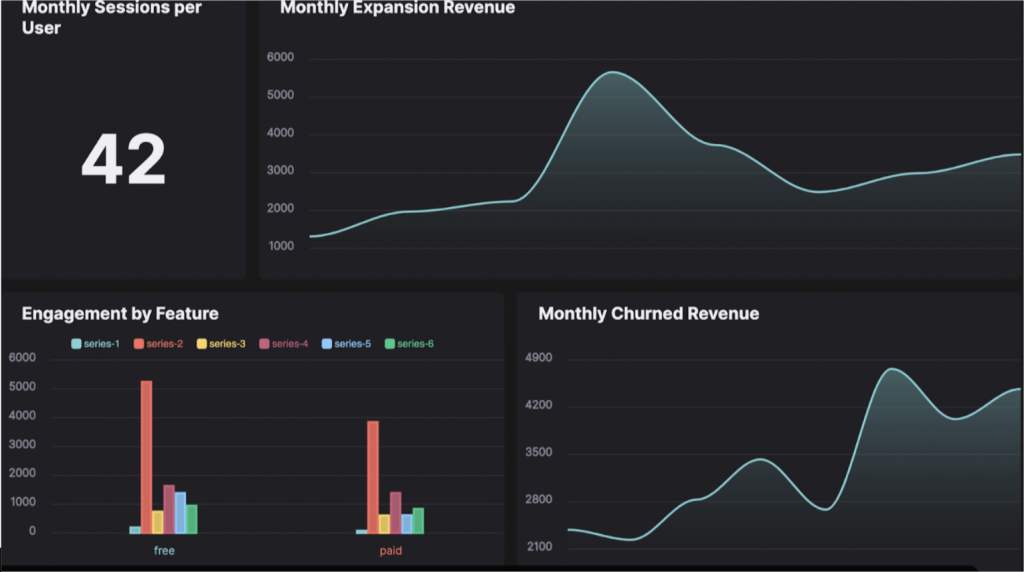
Leverage metrics to make data-driven decisions
With HockeyStack you can track the important metrics such as churn rate, MRR/ARR, expansion rate etc.
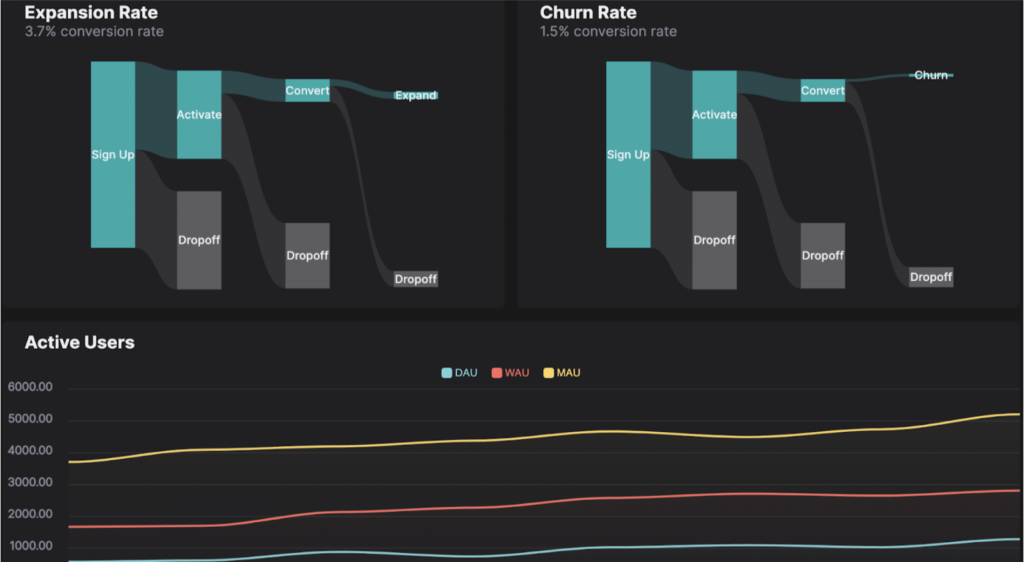
Using the various product, marketing, and sales KPIs available in Hockeystack, you can design your own unique dashboards without typing any code. You can liberate your product data and visualize it in the manner you need to for better decision-making thanks to the no-code, intuitive designer and strong integrations. When all of your data is in one location, it is simpler to understand how changes to your product management strategy will impact other business operations, which lowers your risk of loss.
In a market that is constantly evolving, quick and effective product development becomes a competitive advantage. You and your product team will be able to react rapidly to changing client needs and change the course as necessary with the agile methodology.
-Ideation
-Development
-Testing
-Deployment
-Operations
The agile software development life cycle is the process of ideation, development, release, and maintenance of software with the agile approach.



